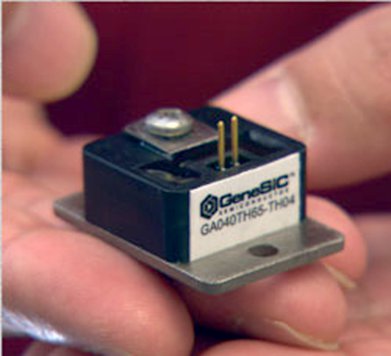
Technology: Silicon-carbide thyristor
Developers:
- GeneSiC Semiconductor Inc.
- Sandia National Laboratories
- U.S. DOE – Office of Electricity, Energy Storage Program
- U.S. Army/Armament Research, Development and Engineering Center
Ultra-high-voltage Silicon Carbide Thyristor
A DOE Energy Storage Systems project, managed by Sandia National Laboratories in partnership with GeneSiC Semiconductor Inc., and the U.S. Army Armament Research, Development and Engineering Center (ARDEC), has developed an Ultra-high-voltage Silicon Carbide Thyristor.The semiconductor device allows next-generation “smart grid” power electronics system to be built up to 10 times smaller and lighter than current silicon-based technologies. These packaged-power devices are the world’s first commercially available, high-voltage, high-frequency, high-current, high-temperature, single-chip SiC-based thyristors. Their performance advantages are expected to spur innovations in utility-scale power electronics hardware and to increase the accessibility and use of distributed energy resources.
The developers adopted a different operational physics for this device, which operates on minority carrier transportation and an integrated third terminal rectifier, which is one more than other commercial SiC devices. The developers adopted a new fabrication technique that supports ratings above 6,500 V, as well as a new gate-anode design for high-current devices. Capable of performing at temperatures up to 300° C and current at 80 A, the SiC Thyristor offers up to 10 times higher voltage, four times higher blocking voltages, and 100 times faster switching frequency than silicon-based thyristors.
For more information, download the factsheet (PDF, 2.4 mb) or watch the video.
